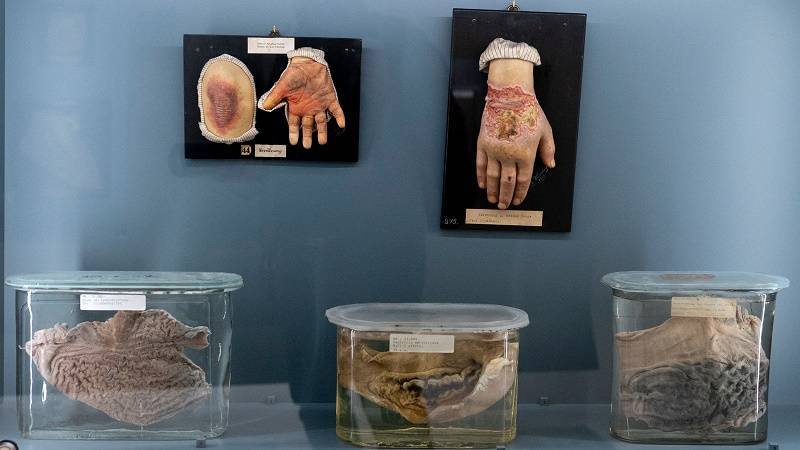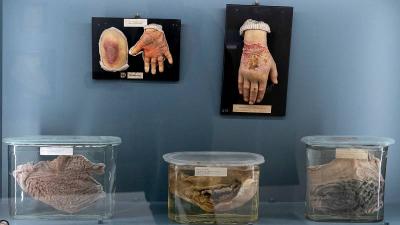The Vienna Natural History Museum has redesigned its pathology exhibition, which includes skulls and human organs such as bones, entrails, and preserved bodies of infants in transparent containers, with explanations provided to visitors, some of whom are shocked and terrified. This collection, owned by the museum, is the largest open to the public in the world, containing 50,000 preserved pieces, displayed in the circular "Narrenturm" (or "Mad House"), which was built in the 18th century as a psychiatric hospital.
The new display method emphasizes a sober character that required significant efforts for the necessary modifications. Thousands of visitors come each week to see what this collection has to offer in terms of bones, entrails, and more. Museum director Voland defended opening visits to the public, while other countries preferred to limit them to researchers only. Voland believes that "everyone faces illnesses at some point," highlighting the educational and pedagogical benefits of showcasing this unique collection, which has been dedicated to training medical students since 1796.
She explained that "some come for information due to personal relevance, while others seek to learn more about scientific advancements." For example, visitors learn about the effects of a tumor in the eye and see the impacts of a virus on the body or what burns can do to blood vessels. Exhibition curator Edward Winter noted that visitors "realize what alcohol can do to the human body" when they see "a liver weighing thirty kilograms."
Biology teacher Christian Behavy, who was visiting the exhibition with a group of students, remarked that their ability to "understand and grasp" concepts is greater when they see what they study rather than just learn theoretically in school. However, some students appeared shocked by what they saw; there was a skeleton of a girl with hydrocephalus and a preserved infant body with torn skin, among other displays. Therefore, the line between these bodies and human organs being an exhibition and becoming a spectacle is very thin.




